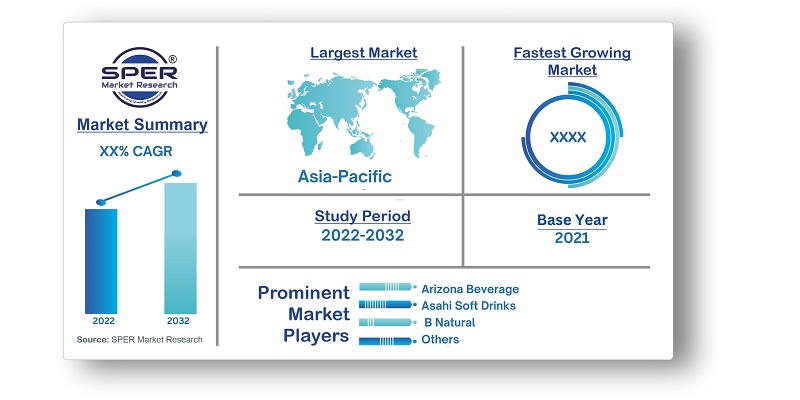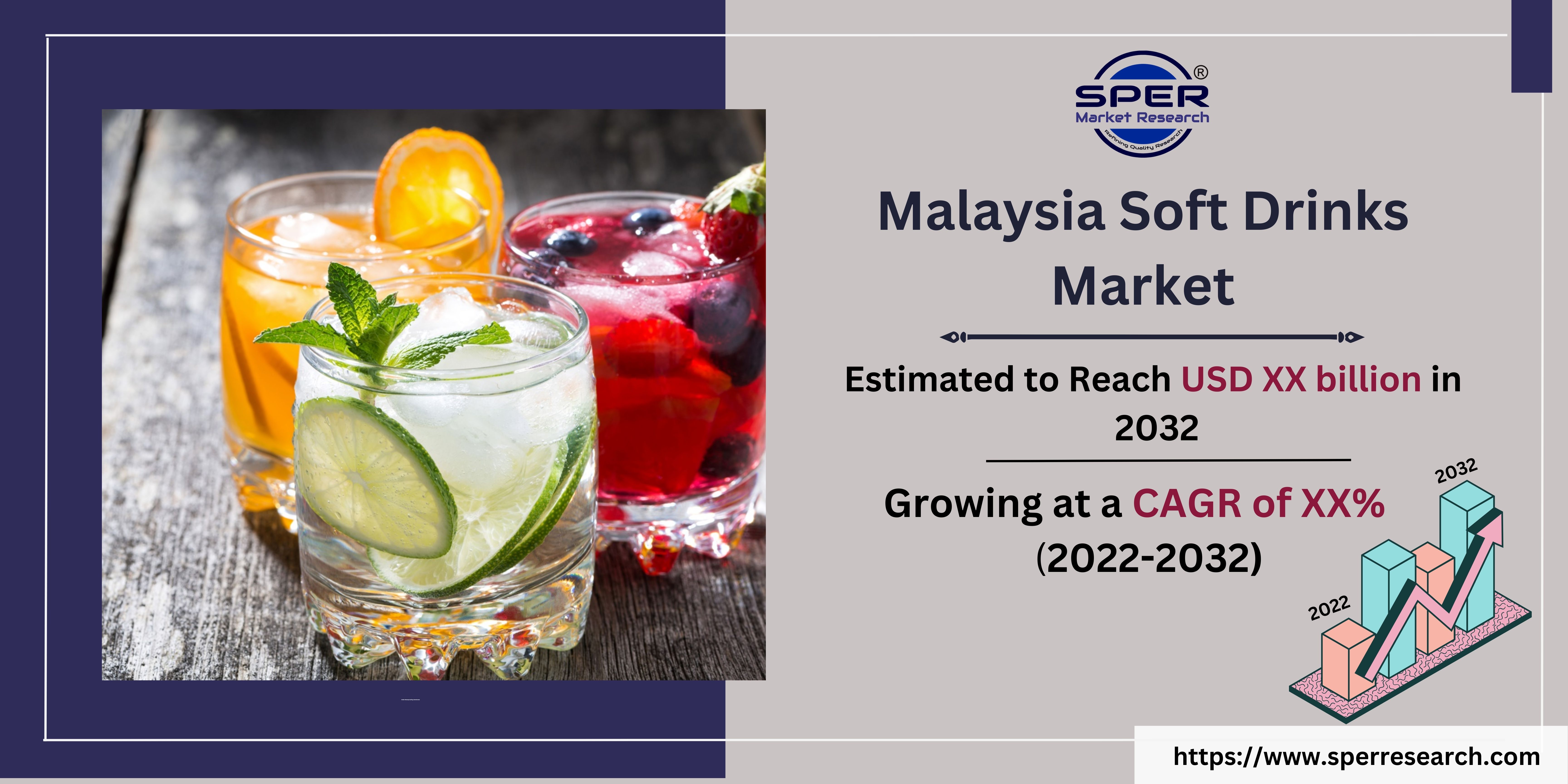
Malaysia Soft Drinks Market Growth, Demand, Size, Share, Revenue, Competition and Future Trends
Malaysia Soft Drinks Market Size- By Type, By Application- Regional Outlook, Competitive Strategies and Segment Forecast to 2032
| Published: Mar-2023 | Report ID: FOOD2325 | Pages: 1 - 105 | Formats*: |
| Category : Food & Beverages | |||

- Opportunities: Continuous product developments by the key market players: The primary driver of growth in the soft drink market is the continuous product development undertaken by market participants. They consistently innovate their products in terms of formulation, components, and packaging to enhance overall sales. Consequently, future growth in the soft drink market is expected to be fuelled by the introduction of new products that cater to the health needs of the target consumers.
- Challenges: Increasing awareness about obesity & obesity-related issues: The market is anticipated to face challenges due to the rising prevalence of obesity and its associated health issues. There is a growing number of consumers who are reducing their consumption of high-sugar and high-calorie food and beverage items. This shift in consumer awareness regarding the risks of obesity, which includes conditions like high blood pressure, diabetes, and joint problems, is expected to lead to a substantial decline in the sales of carbonated soft drinks, juices, and other soft drink products, negatively impacting the market.

| Report Metric | Details |
| Market size available for years | 2019-2032 |
| Base year considered | 2021 |
| Forecast period | 2022-2032 |
| Segments covered | By Type, By Application |
| Regions covered | East Malaysia, Peninsular Malaysia, West Malaysia |
| Companies Covered | A.G. Barr, Arizona Beverage, Asahi Soft Drinks, B Natural, Britvic, Coca-Cola, Danone, Dr Pepper Snapple, Highland Spring, Innocent Drinks, Ito En, Kirin, Nestle, Otsuka Holdings, PepsiCo, POM Wonderful, Red Bull, Unilever Group, Suntory |
- Business development professionals
- Directors
- Financial professionals
- Industry strategists
- Investment managers
- M&A managers
- Management consultants
- Marketing professionals
- Product developers
- Product managers
- Others
| By Type: |
|
| By Application: |
|
- Size of Malaysia Soft Drinks Market (FY’2019-FY’2032)
- Overview of Malaysia Soft Drinks Market
- Segmentation of Malaysia Soft Drinks Market By Type (Bottled Water, Carbonates, Dilutable, Fruit Juice, Still and Juice Drinks)
- Segmentation of Malaysia Soft Drinks Market By Application (Convenience Store, Online Stores, Supermarket, Other)
- Statistical Snap of Malaysia Soft Drinks Market
- Malaysia Soft Drinks Market Growth Analysis
- Problems and Challenges in Malaysia Soft Drinks Market
- Malaysia Soft Drinks Market Competitive Landscape
- Impact of COVID-19 and Demonetization on Malaysia Soft Drinks Market
- Details on Recent Investment in Malaysia Soft Drinks Market
- Competitive Analysis of Malaysia Soft Drinks Market
- Major Players in the Malaysia Soft Drinks Market
- SWOT Analysis of Malaysia Soft Drinks Market
- Malaysia Soft Drinks Market Future Outlook and Projections (FY’2019-FY’2032)
- Recommendations from Analyst
1.1. Scope of the report1.2. Market segment analysis
2.1 Research data source2.1.1 Secondary data2.1.2 Primary data2.1.3 SPER’s internal database2.1.4 Premium insight from KOL’s2.2 Market size estimation2.2.1 Top-down and Bottom-up approach2.3 Data triangulation
4.1. Driver, Restraint, Opportunity and Challenges analysis4.1.1 Drivers4.1.2 Restraints4.1.3 Opportunities4.1.4 Challenges4.2. COVID-19 Impacts of the Malaysia Soft Drinks Market
5.1. SWOT analysis5.1.1 Strengths5.1.2 Weaknesses5.1.3 Opportunities5.1.4 Threats5.2. PESTEL analysis5.2.1 Political landscape5.2.2 Economic landscape5.2.3 Social landscape5.2.4 Technological landscape5.2.5 Environmental landscape5.2.6 Legal landscape5.3. PORTER’S five forces analysis5.3.1 Bargaining power of suppliers5.3.2 Bargaining power of Buyers5.3.3 Threat of Substitute5.3.4 Threat of new entrant5.3.5 Competitive rivalry5.4. Heat map analysis
6.1 Malaysia Soft Drinks Manufacturing Base Distribution, Sales Area, Product Type6.2 Mergers & Acquisitions, Partnerships, Product Launch, and Collaboration in Malaysia Soft Drinks Market
7.1 Bottled Water7.2 Carbonates7.3 Dilutable7.4 Fruit Juice7.5 Still and Juice Drinks
8.1 Convenience Store8.2 Online Stores8.3 Supermarket8.4 Other
9.1 Malaysia Soft Drinks Size and Market Share by Region (2019-2025)9.2 Malaysia Soft Drinks Size and Market Share by Region (2026-2032)9.3 East Malaysia9.4 Peninsular Malaysia9.5 West Malaysia
10.1 A.G. Barr10.1.1 Company details10.1.2 Financial outlook10.1.3 Product summary10.1.4 Recent developments10.2 Arizona Beverage10.2.1 Company details10.2.2 Financial outlook10.2.3 Product summary10.2.4 Recent developments10.3 Asahi Soft Drinks10.3.1 Company details10.3.2 Financial outlook10.3.3 Product summary10.3.4 Recent developments10.4 B Natural10.4.1 Company details10.4.2 Financial outlook10.4.3 Product summary10.4.4 Recent developments10.5 Britvic10.5.1 Company details10.5.2 Financial outlook10.5.3 Product summary10.5.4 Recent developments10.6 Coca-Cola10.6.1 Company details10.6.2 Financial outlook10.6.3 Product summary10.6.4 Recent developments10.7 Danone10.7.1 Company details10.7.2 Financial outlook10.7.3 Product summary10.7.4 Recent developments10.8 Dr Pepper Snapple10.8.1 Company details10.8.2 Financial outlook10.8.3 Product summary10.8.4 Recent developments10.9 Highland Spring10.9.1 Company details10.9.2 Financial outlook10.9.3 Product summary10.9.4 Recent developments10.10 Innocent Drinks10.10.1 Company details10.10.2 Financial outlook10.10.3 Product summary10.10.4 Recent developments10.11 Ito En10.11.1 Company details10.11.2 Financial outlook10.11.3 Product summary10.11.4 Recent developments10.12 Kirin10.12.1 Company details10.12.2 Financial outlook10.12.3 Product summary10.12.4 Recent developments10.13 Nestle10.13.1 Company details10.13.2 Financial outlook10.13.3 Product summary10.13.4 Recent developments10.14 Otsuka Holdings10.14.1 Company details10.14.2 Financial outlook10.14.3 Product summary10.14.4 Recent developments10.15 PepsiCo10.15.1 Company details10.15.2 Financial outlook10.15.3 Product summary10.15.4 Recent developments10.16 POM Wonderful10.16.1 Company details10.16.2 Financial outlook10.16.3 Product summary10.16.4 Recent developments10.17 Red Bull10.17.1 Company details10.17.2 Financial outlook10.17.3 Product summary10.17.4 Recent developments10.18 Unilever Group10.18.1 Company details10.18.2 Financial outlook10.18.3 Product summary10.18.4 Recent developments10.19 Suntory10.19.1 Company details10.19.2 Financial outlook10.19.3 Product summary10.19.4 Recent developments
SPER Market Research’s methodology uses great emphasis on primary research to ensure that the market intelligence insights are up to date, reliable and accurate. Primary interviews are done with players involved in each phase of a supply chain to analyze the market forecasting. The secondary research method is used to help you fully understand how the future markets and the spending patterns look likes.
The report is based on in-depth qualitative and quantitative analysis of the Product Market. The quantitative analysis involves the application of various projection and sampling techniques. The qualitative analysis involves primary interviews, surveys, and vendor briefings. The data gathered as a result of these processes are validated through experts opinion. Our research methodology entails an ideal mixture of primary and secondary initiatives.



Frequently Asked Questions About This Report
PLACE AN ORDER
Year End Discount
Sample Report
Pre-Purchase Inquiry
NEED CUSTOMIZATION?
Request CustomizationCALL OR EMAIL US
100% Secure Payment






Related Reports
Our Global Clients
Our data-driven insights have influenced the strategy of 200+ reputed companies across the globe.






















